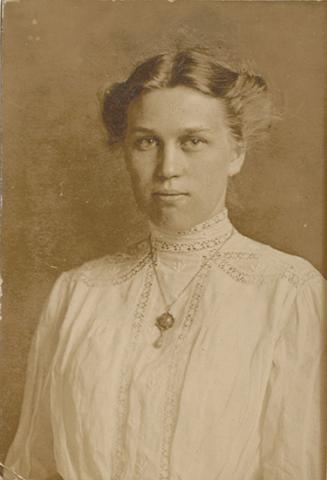A Force for Women Workers
An advocate for women in the workforce, Hilda Worthington Smith ’1911 left her mark on Bryn Mawr and beyond.
The article is based on research conducted by the Who Built Bryn Mawr? project, which supports research and curatorial opportunities for students interested in changing the way the College understands its history and seeks to recognize the whole range of alumnae/i, faculty, and staff who have made important contributions to building Bryn Mawr.
Hilda Worthington Smith ’1911 (1888–1984) served as director of the Bryn Mawr Summer School for Women Workers in Industry from its founding in 1921 until 1933. Under her leadership, the School brought more than 100 women factory workers to campus every summer, including the first Black students to study at Bryn Mawr.
Born into a prosperous family in New York City, Smith graduated from Bryn Mawr with a bachelor’s degree in economics, politics, and philosophy in 1910, and a master’s degree in ethics and philosophy in 1911. Smith worked on philanthropic endeavors in New York before returning to Bryn Mawr in 1916 to develop a community center that served underprivileged groups in the town. Smith’s work included organizing childcare for working parents, providing meals to those who could not afford them, devoting time to orphanages, and acting as a hospital nurse during the 1918 influenza outbreak. She also developed ties between the community center and Bryn Mawr College’s new graduate program in social economy and social research.
In 1919, Smith became dean at Bryn Mawr. During her tenure, she instituted informal evening classes for Black and immigrant housekeepers, gardeners, and cooks. In her 1978 autobiography, Opening Vistas in Worker’s Education: An Autobiography of Hilda Worthington Smith, she notes how this was an important stepping-stone to the formation of the Bryn Mawr Summer School for Women Workers in Industry and taught her much about the barriers to a college education.
Smith initially underestimated the Summer School students’ interest in shaping the curriculum, teaching, and policies. To correct for this, she wrote in Women Workers at the Summer School (1929): “An immediate attempt was made to organize the School in such a way that students should have voice and vote on all School matters.”
After leaving Bryn Mawr in 1933, Smith served as a leader in federal programs for worker education during the New Deal and continued to be a pioneering force in labor education throughout her career.
For more about the Bryn Mawr Summer School for Women Workers in Industry, visit the For Roses, Too exhibit.
Published on: 09/21/2021
